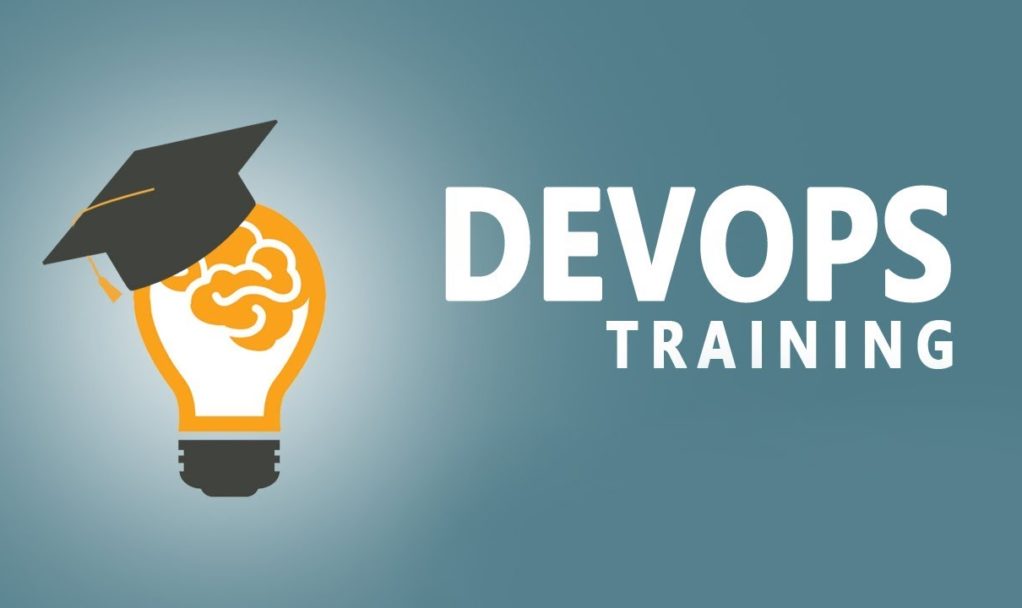Work
Can Your Driving Record Affect Your Chance to Get a Job?


Many drivers get traffic tickets, and they don’t usually affect driving records. But how does it look to a prospective employer? Will running a red light hurt your chances?
In some cases, the consequences of traffic violations are very real. Millions of people nationwide have lost their licenses because of traffic debt. A less-than-spotless driving record can affect your career and have a significant financial impact on you.
Employment Background Checks and Traffic Violations
There are two ways in which a traffic violation can surface during a pre-employment screening:
- If the employer checks your driving record
- Criminal citation classification
A prospective employer can’t find any evidence of the violation in any other circumstance. A citation will appear in a background check as a misdemeanor or felony. Citation classifications include:
- DUI
- Being a habitual offender.
- You are driving without a license.
- Reckless driving.
- You leave the scene of an accident.
- Vehicular homicide or manslaughter.
When an MVR background check occurs, prospective employers will identify minor or civil violations. They don’t need driving records in most cases. They will only check if a candidate needs a vehicle for a trucking job or to meet clients, or otherwise related to the job.
What Do Driving Checks Entail?
The driving record check will show traffic citations, when they occurred, and the outcome. They can impact your employment chances, but not severely. It depends on the job you applied for and the type of traffic violation. The employer will check for a criminal record if the job doesn’t require driving.
Keep in mind that unpaid fines for civil violations will appear as criminal citations on your record.
Assuming the job involves driving, consider the following factors:
- The seriousness of the violation
- When it happened
- The status of the fine
- Was it a one-off or a series of violations
- The company’s traffic violation policies
Let’s say a speeding ticket appears on your record. The record will indicate by how much you exceeded the limit. Five miles? No big deal. 50 is another thing.
Driving violations are removed from records once seven years pass. If it occurred a long time ago, it’s not likely to affect your chances of getting a job.
Habitual offenses are a major red flag for most companies.
If you have a fine, pay it before applying for jobs.
Every company’s traffic violation policies differ. It’s a good idea to look into these before applying for a job with them.
Prepare for the Screening
Ask for a copy of your record from the Department of Motor Vehicles. If you have a relatively serious violation on it, like driving under the influence, discuss it openly with the interviewer if asked.
On the other hand, parking or speeding tickets are not a cause for concern. Still, don’t get defensive if asked about those.
Get the Job Despite a Traffic Violation
You can improve your chances of being selected in many ways. Here are some recommendations:
Fines: Pay outstanding fines immediately. The only exception is you’re raising objections to a ticket. Otherwise, don’t wait.
Safety: Develop safe driving habits to stop accumulating traffic violations.
Get ready for any questions about your driving record. Your prospective employer will then be convinced you’re a safe and responsible driver.
Learn about your employer’s traffic violation policy and provisions regarding when they took place.
Who Will Check Your Driving Record?
Three entities typically carry out background checks:
- Data brokers
- Specialized screening services
- Private investigators
Big companies work with third-party screening providers. In most other cases, screening companies work with businesses less formally. Some focus on specific regions, while others work nationwide.
The data collected by screening companies are subject to the Fair Credit Reporting Act (FCRA), under which all employees have certain rights. The potential employer needs your written permission to run a background check on you and share the results with you.
Final Thoughts
Traffic violations on your record can influence your chances of getting a job, but they won’t necessarily harm them. Companies check motor vehicle history when hiring for positions that involve driving their service vehicles.
Pre-employment screening is not limited to driving records. It includes criminal, employment, education, credit, civil, and medical background checks. Companies want to know as much as possible about who they’re hiring.
Work
Why Invest in Ergonomic Furniture? What Makes It Different from Traditional Furniture?


People spend a big portion of their lives working, and it’s crucial to pay attention to the environment in which they work. One of the most pertinent factors that can impact our well-being and productivity is the furniture we use.
Traditional furniture has been a staple in homes and offices for centuries, but there has been a growing recognition of the benefits of ergonomic furniture in recent years. Explore why investing in ergonomic furniture is quite a smart choice and what keeps it apart from traditional furniture.
Prioritising Comfort and Health
These pieces of furniture are designed with a primary focus on user comfort and health. Unlike traditional furniture, which often prioritises aesthetics over functionality, it is meticulously crafted to support the body’s natural posture and movements.
Chairs, desks, and other ergonomic pieces are designed to reduce strain on the neck, shoulders, back, and wrists. They are also adjustable to cater to individual preferences, ensuring that users can maintain a healthy and comfortable working posture throughout the day.
Enhanced Productivity and Focus
One of the key advantages of these furniture pieces is their ability to boost productivity and concentration. Traditional furniture may look elegant but often falls short of providing the necessary support for extended work periods.
On the other hand, ergonomic office furniture like chairs and desks are equipped with features such as lumbar support, adjustable height, and tilt functions, all of which contribute to better posture and reduced discomfort. When individuals are comfortable and pain-free, they can stay zoned in on their tasks, leading to increased efficiency and output.
Customisation for Individual Needs
They stand out due to their high level of customisation. Unlike traditional furniture, which comes in standardised sizes and designs, ergonomic pieces can be tailored to individual needs. Whether you are tall or short, have specific medical conditions, or simply prefer a particular style, ergonomic furniture can be adjusted to accommodate your requirements. This level of customisation helps ensure that users can create a workspace that is uniquely tailored to their preferences, ultimately enhancing their comfort and productivity.
A Long-Term Investment
Investing in them is a wise long-term decision. While traditional furniture may seem more affordable initially, it often comes with hidden costs in the form of health issues and decreased productivity over time. On the other hand, it may require a slightly larger upfront investment, but it pays off in the long run by reducing the risk of musculoskeletal problems and increasing work efficiency. Moreover, high-quality pieces of furniture are built to last, making it a durable and sustainable choice.
A Versatile and Adaptive Piece of Furniture
Another distinctive feature of the furniture is its versatility and adaptability. Traditional furniture is typically designed for a single purpose and may not be easily reconfigured to accommodate changing needs. They are, however, designed with versatility in mind. Many ergonomic desks, for instance, can be adjusted for sitting or standing positions, promoting movement throughout the day. This adaptability not only supports health but also caters to the evolving demands of modern workspaces.
Conclusion
In conclusion, investing in ergonomic furniture is a prudent choice for those who value their health, well-being, and productivity. Unlike traditional furniture, which often sacrifices comfort and functionality for aesthetics, the furniture places user comfort and health at the forefront. It enhances productivity, reduces the risk of health issues, offers customisation options, and is a long-term investment.
Its versatility and adaptability make it quite an ideal choice for the ever-changing demands of today’s work environment. So, when it comes to furnishing your home or office, consider making the switch to these pieces of furniture – your body and productivity will thank you.
Work
Breaking Down Barriers: 6 Online Collaboration Tools for Effective Teamwork


As remote work becomes increasingly common, effective online collaboration tools are more important than ever to help teams work together seamlessly.
Everything from project management software and video conferencing apps to a digital mailbox is available. This article will explore six top-rated online collaboration tools that can help streamline communication and collaboration within your team.
Cloud storage and file-sharing tools
Cloud storage and file-sharing tools allow teams to access and collaborate on files from anywhere. Some popular options include Dropbox, Google Drive, and Microsoft OneDrive. Dropbox is a cloud storage tool that allows teams to store, share, and collaborate on files, with features like automatic syncing and file recovery. Google Drive, on the other hand, is a popular choice for teams that use Google’s suite of productivity tools, like Google Docs and Sheets.
Video conferencing tools
Video conferencing has become vital to remote work, allowing teams to communicate face-to-face from different locations. With so many video conferencing tools available, it can be challenging to choose the right one. Some popular options include Zoom, Google Meet, and Microsoft Teams. Zoom, in particular, has become one of the most popular video conferencing tools due to its ease of use and reliability. Its features, including screen sharing and virtual backgrounds, make it an excellent option for small and large meetings.
Project management tools
Project management tools help teams stay organized and on track, whether working in the same office or remotely. Some popular project management tools include Asana, Trello, and Basecamp. Asana is a powerful project management tool that allows teams to create and assign tasks, set deadlines, and communicate with each other in real time. Trello, on the other hand, is a visual tool that uses boards, lists, and cards to organize tasks and projects.
Instant messaging tools
Instant messaging tools allow teams to communicate quickly and easily without the need for email or phone calls. Some popular instant messaging tools include Slack, Microsoft Teams, and WhatsApp. Slack is a team communication tool that allows teams to organize their conversations into channels and direct messages, share files, and integrate with other tools.
Online whiteboards and diagramming tools
Online whiteboards and diagramming tools are helpful for teams that need to brainstorm and collaborate visually. Some popular options include Miro, Lucidchart, and Canva. Miro is a whiteboard tool that allows teams to collaborate on diagrams, wireframes, and mind maps. Lucidchart, on the other hand, is a diagramming tool that allows teams to create and share flowcharts, org charts, and other visual representations.
Time tracking and productivity tools
Time tracking and productivity tools help teams stay on track and meet deadlines. Some popular options include RescueTime, Toggl, and Harvest. RescueTime is a time-tracking tool that helps teams understand how they spend their time and identify areas where they can be more productive. Toggl, on the other hand, is a simple time-tracking tool that allows teams to track time for specific tasks and projects.
Parting words
Effective teamwork requires the right tools for collaboration. Whether it’s video conferencing, project management, cloud storage, instant messaging, online whiteboards, or time tracking, many tools are available to help teams work together more efficiently and effectively. By using these six online collaboration tools, teams can break down barriers and work together, no matter where they are.
Work
What Are the Benefits of Getting a Devops Course Certification?


In order to transform collaboration, DevOps must first integrate development operations and then require a chain of tools that are interconnected. According to Gartner, businesses all over the world are increasingly embracing a culture of “devops” in the modern era. You can enroll for a Devops certification course taught by industry experts. Simplilearn also offers devops training in Hyderabad and many other cities.
The Value of Obtaining a DevOps Certification
There is a multitude of advantages to becoming certified in DevOps Foundation, some of which are as follows:
1. Better employment prospects
DevOps is a concept that is still relatively new in the world of information technology, and more and more businesses are considering implementing DevOps practices and processes. Between the required number of DevOps professionals and the number of DevOps professionals currently on the market, there is a sizable skills gap. By obtaining a DevOps certification, which verifies their skill sets within the DevOps framework, IT professionals can take advantage of the severe shortage of highly skilled workers. As a result, there will be substantially better employment opportunities.
2. Increased knowledge & skill
DevOps’ central tenet centers on the adoption of innovative decision-making techniques and thought processes. An organization will be able to put DevOps’ many technical and business advantages into practice once they are aware of them all. Professionals working together in teams with members coming from a variety of different functional backgrounds make up the core of DevOps. Developers, business analysts, quality assurance experts, and operation engineers are just a few of the experts who make up these teams.
3. Increases in wages
The rapid adoption of DevOps best practices in organizations and the implementation of those practices in the aforementioned organizations have led to enormous increases in pay for DevOps professionals.
Industry experts from all over the world believe that this trend will continue and be sustainable for the foreseeable future. In the field of information technology, DevOps professionals are paid the most.
4. Productivity and performance improvements
Downtime, which can be attributed to waiting for other employees or staff as well as other software and software-related issues, negatively affects the employees and staff at conventional IT workplaces. The main goal of an information technology professional should be to be productive for the majority of the time that they are at their place of employment. This can be achieved by cutting down on waiting time for other staff members or software updates and eliminating the parts of the work process that are both unproductive and unsatisfactory. Not only will this improve the effectiveness of the work completed, but it will also significantly raise the value of the company as a whole and of each employee personally.
5. Gain the ability to create, deploy, and secure modern applications for your organization.
The DevOps methodology’s main goal is to promote improved communication and collaboration between the teams in charge of system administration and software development. Shorter development cycles are the direct result of this, which leads to a rise in the frequency of release code being used in production. DevOps implementation can reduce months of work to a matter of hours, and it can be very easily integrated into the processes of quality assurance and quality control for defect detection. This will be extremely advantageous for your company, and it will also make you stand out from the crowd at work.
6. Reliability and Software Quality
The distinguishing feature of DevOps is the high level of accountability for creating and maintaining applications that are expected to operate as intended. When an organization adopts DevOps, every team member will work toward the same quality objectives, which may include stability, performance, and security, as well as user experience and time-to-market considerations. When put into practice, the DevOps principles will guarantee that all project activities and processes are meticulously tracked and that the organization is informed of and ready for the effects of any changes made to the processes themselves.
7. Lessening of the likelihood of unwanted change
The resistance to change in traditional information technology stems from the fear that it might impair ongoing business operations. This impediment, which slows down advancement within an organization, is the root cause of all operational issues. The implementation of multiple tiers of assessment, review, and approval workflows allowed for the monitoring and verification of change processes at each stage of their development. However, the majority of work environments are experiencing a rapid acceleration of change in the current IT market. In order to maintain product quality while meeting ever-tighter delivery deadlines, this is required. And all of this has to be done while meeting the high standards for speed and agility that are currently expected of businesses engaged in the information technology sector.
People who want to enhance the caliber of IT Service Management and comprehend the idea of IT Infrastructure Library (ITIL) frameworks must hold an IT Infrastructure Library 4 Foundation Certification in ITIL. Anyone who wants to help their company adopt a new service management culture and who needs to comprehend the fundamental concepts underlying the provision of digital and information technology services should take the ITIL 4 Foundation course. Both IT professionals looking to update their existing ITIL knowledge and those who are just beginning their journey to ITIL 4 should take this course.
The framework known as ITIL4, or IT Infrastructure Library, version 4, was created with a set of procedures to implement the most dependable type of IT Service Management. In order to emphasize service conditions and flexibility, establish the service life cycle, pursue more specialized customer comfort, and advance digital modification, the ITIL4 structure was created. whereas DevOps is a group of concepts that result from the interaction of two significant objectives. The first of these was described as “agile methods,” and the second is a greater awareness of the level of collaboration between the development and operations teams. When speaking of ITIL 4 and DevOps, the second term, DevOps, primarily focuses on integrating software testing, software development, Quality Analysis, and deployment platform, as well as maintaining a continuous integration and delivery cycle. A shorter turnaround time is the aim of operating DevOps Automation Tools in sets and moving in an agile manner.
-



 Quotes4 years ago
Quotes4 years ago125 Inspirational Car Quotes and Captions to Celebrate Your New Car
-



 Growth4 years ago
Growth4 years ago188 Deep Hurt Quotes with Images
-



 Quotes3 years ago
Quotes3 years ago148 Romantic Love Quotes for Her from the Heart
-



 Quotes3 years ago
Quotes3 years ago185 Cute Boyfriend Quotes for the Guy You Love
-



 Quotes3 years ago
Quotes3 years ago141 Best Heart Touching Quotes about Love, Life, and Friendship
-



 Quotes3 years ago
Quotes3 years ago134 Time Flies Quotes for the Unforgettable Moments
-



 Quotes3 years ago
Quotes3 years ago122 Inspirational Kite Quotes That’ll Make You Wanna Fly Right Now
-



 Quotes4 years ago
Quotes4 years ago101 Powerful Black Women Quotes to Empower You






